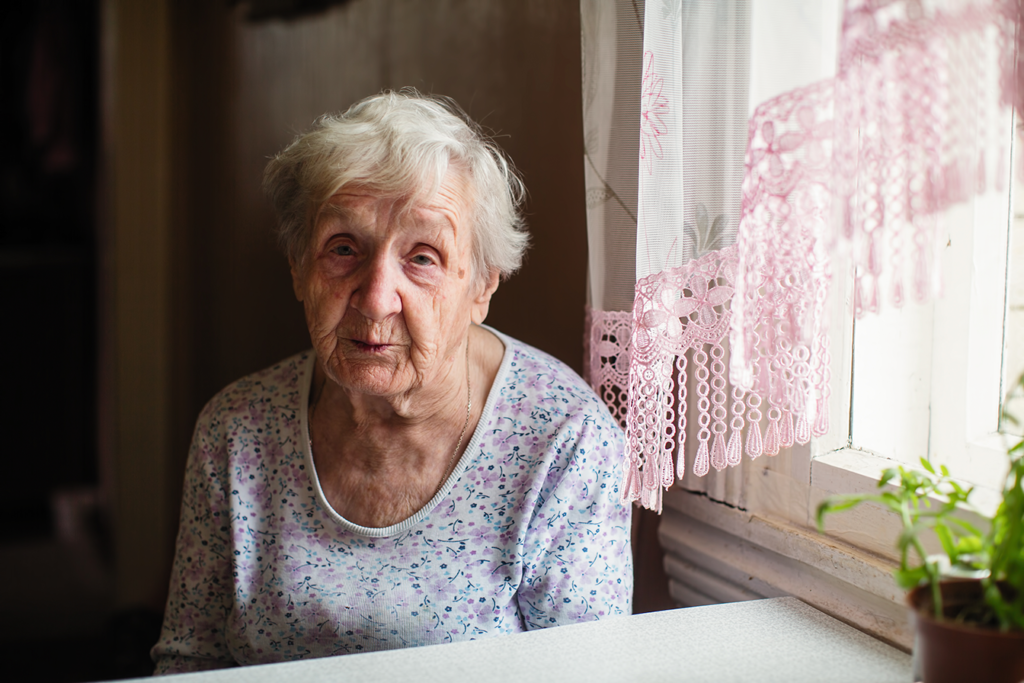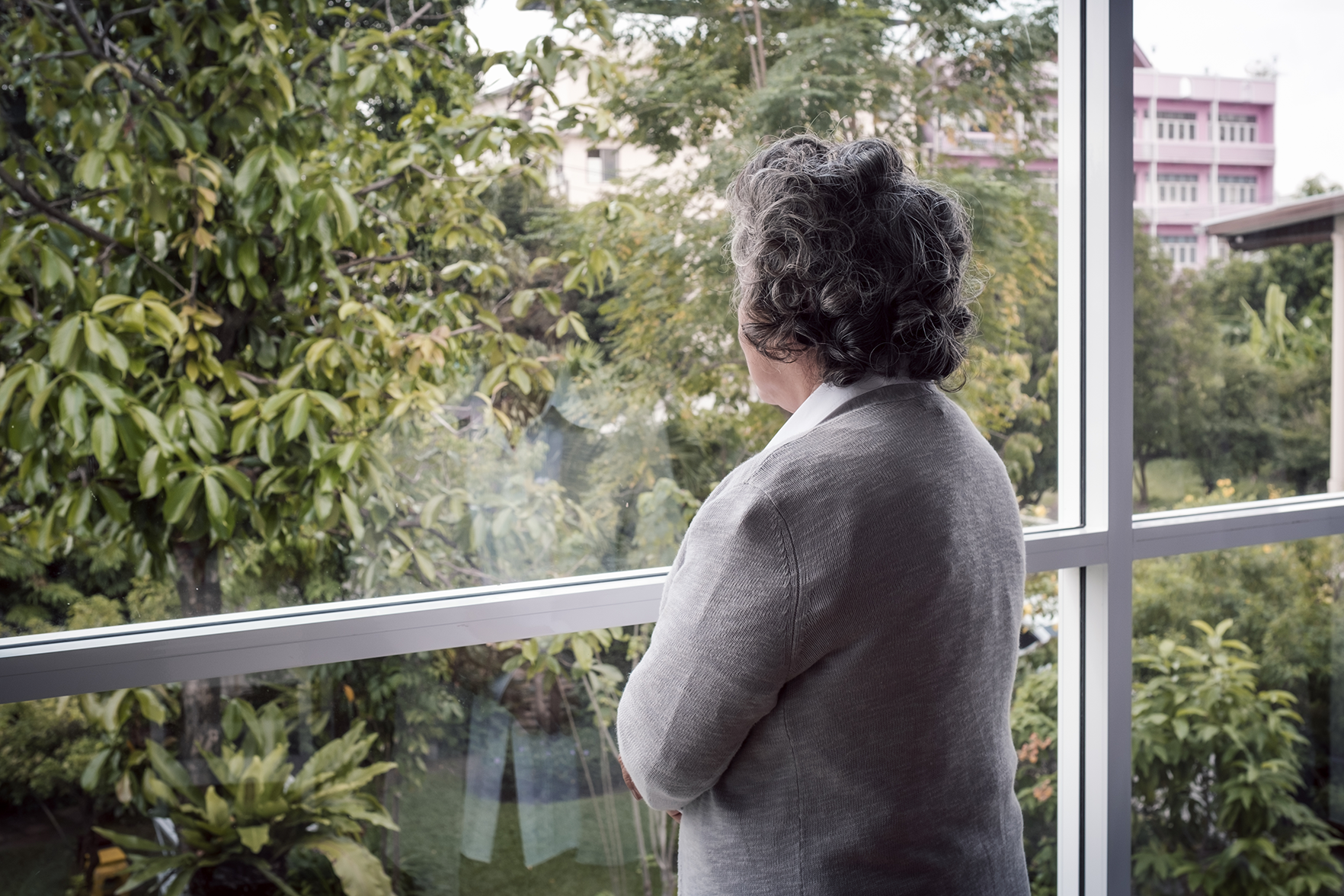Research suggests that one in four adults experience feelings of loneliness and social isolation.

A 2017 New Zealand study of 72,000 older people who had received an InterRAI home-care assessment found that 21 per cent of the sample (aged 82.7 years on average) were lonely, and 29 per cent of those living alone. More recent data from 2022 suggests that this has increased to 31 per cent of older adults over 65 experiencing loneliness, with those over 75 more likely to be lonely than any other age group.
Furthermore, at least 25 per cent of older adults over 65 are socially isolated. Other research has found that living in a residential aged care facility can potentially contribute to these feelings of loneliness and social isolation.
While loneliness can affect people of every age, for the elderly or physically challenged, it can be especially debilitating, leading to serious health problems and even death. For some, it begins with the loss of a spouse or a close friend or the onset may be more subtle, such as declining interest in what were once a favourite pastime or hobby. It can also lead to the uptake of unhealthy habits including alcoholism or an obsession with sweepstakes and gambling.
Loneliness vs isolation
To determine if an older adult is feeling lonely or becoming socially isolated, it’s important to differentiate the two.
Loneliness is a state of mind linked to the need for meaningful connection. It’s the distressing feeling of being alone or separated regardless of how much social contact one has.
Social isolation is not a feeling, but rather a condition defined by the lack of social connections and having people to interact with regularly. More than a temporary feeling of being alone, it is an objective condition that involves the size of one’s social network, physical abilities, availability of transportation and the ability to access resources and information.
While social isolation can lead to loneliness, some people can still feel lonely even if they are not socially isolated. You can live alone and not feel lonely or socially isolated, and you can feel lonely while being with other people.

The health risks of loneliness
The underlying factors involved can manifest in many different ways, so precisely measuring social isolation and loneliness is difficult. However, studies have shown compelling evidence that adults aged 50 and older who are socially isolated or lonely have a higher degree of serious health risks, including:
- Weakened immune system
- Greater risk of high blood pressure
- Greater risk of diabetes and sleep disorders
- 29 per cent increased risk of heart disease
- 32 per cent increased risk of stroke
- Close to a 50 per cent increased risk of dementia
- 57 per cent increased risk of emergency room visits
- 68 per cent increased risk of hospitalisation
- Higher rates of depression, anxiety and suicide
- Greatly increased risk of premature death from all causes
And while not a health risk, per se, it’s worth noting the dangers faced by older adults who can be susceptible to con artists who take advantage of the lonely through scams.
Loneliness myths
According to a recent study, many people 40 years and older often dismiss the impact loneliness and social isolation may have on their own lives. Here are just a few of the misconceptions people have about loneliness:
- The more people you know, the less lonely you’ll be
- Social isolation is usually brought on by a single event, like the death of a spouse
- Loneliness and social isolation will never affect me personally.
Almost half of those surveyed also believe social isolation can cause physical effects, but most are unaware of how harmful such effects can be – a mere 28 per cent are aware that prolonged social isolation is the equivalent of smoking 15 cigarettes a day. Yet, despite the negative effects loneliness and social isolation can have on health, only 10 per cent of medical practitioners asked their older adult patients about this during routine medical exams.

Warning signs of loneliness
The signs can differ depending on an individual’s situation, but having a few or more of these symptoms may be an indicator of chronic loneliness:
- Tiredness, low energy and lack of motivation
- Difficulty falling asleep, staying asleep or sleeping too much
- Change in appetite or sudden change in weight
- Increased alcohol consumption, smoking or use of drugs/medication
- Difficulty connecting with others or maintaining close friendships
- Efforts to engage socially make you feel exhausted
- Overwhelming feeling of isolation even when around others
- Negative feelings of self-doubt and self-worth
- Feelings of not being seen or heard
- Thoughts of suicide.
Factors that can lead to loneliness
Living alone, chronic illness and the loss of family or friends are all factors that increase the risk of loneliness and social isolation in older adults. Here are some more common causes for loneliness and feelings of seclusion among the elderly:
- Lack of mobility – Losing the ability to drive can not only feel like a step towards decreased independence, but often severs one’s connections to favourite places and people.
- Physical limitations – Chronic pain and other health issues that create difficulty getting around, further contributing to lack of mobility.
- Poor vision and hearing – These afflictions affect each person differently, and for some, it creates feelings of alienation and anxiety, making them uncomfortable in noisy places with a lot of people.
- Depression – Some estimates of major depression in older people range from less than 1 per cent to about 5 per cent but rise to 13.5 per cent in those who require home healthcare – and those battling depression or anxiety are often reluctant to leave their home.
- Financial concerns – If on a fixed income, older adults may avoid social activities because they feel any associated costs are too extravagant.

How whanau can help a lonely parent
Social connections are critical when it comes to warding off loneliness. Social relationships encourage people to try new things and take better care of their health. It’s important to maintain a sense of purpose, and those who do usually have more meaningful connections, larger social networks and higher mental well-being scores.
Here are some ways you can help an aging parent feel more connected to friends, family and their community:
- Spend time connecting – Face to face is best, but not always possible. What’s important is that you check in regularly, even if by phone. Social media is another way to share family happenings and photos. Consider more frequent contact, too – you might be surprised how even a brief daily conversation can brighten your parent’s day and give them something to look forward to.
- Be mindful of special days – Holidays, birthdays and anniversaries of both births and deaths can trigger lonely feelings. Make an extra effort to keep in touch during these times. Encourage your parent to talk about a favourite memory they have of that day, or the person associated with it – or share your own. Hearing what their children remember about the family’s past can be a source of great joy for older adults.
- Help them stay active – Whether it’s getting together with friends to have lunch, play cards or engage in a hobby, encourage your parent to connect with others – any situation where people meet regularly to work together on some common cause fosters meaningful relationships. Consider volunteer opportunities, adult education classes and exercise programs like walking groups or yoga. Explore group activities, games and social events offered by your local senior centre.
- Be a catalyst for change – Some people are simply not “joiners.” Sometimes a shy parent needs a little extra support – consider accompanying them to an event or help arrange transportation and facilitate the process.
- Connecting outside their peer group – Explore volunteer opportunities that serve the younger generation or search out organizations that connect older adults with youth for mentorship and mutual friendship.
- Reach out for support – Make your parent’s neighbours aware of their living situation and ask if they’d consider occasionally checking in with your parent. Create a phone list of people nearby your parent and give them your contact information should they ever need to reach you in an emergency.
- Consider companion care – If you and other family members live far away from your parents, explore home services that offer regular visits, medication reminders, meal preparation, shopping, transportation and more. Discuss scheduling a short-term stay at a senior living community as this could provide a more relaxed introduction to community living that allows your parent to experience the opportunities for daily engagement with others without having to make an immediate decision about moving.
- Explore a senior living community – The type of social interaction and engaging events found in a vibrant senior living community combat loneliness and isolation by offering older adults daily opportunities to make meaningful connections, pursue existing hobbies and discover new interests.









